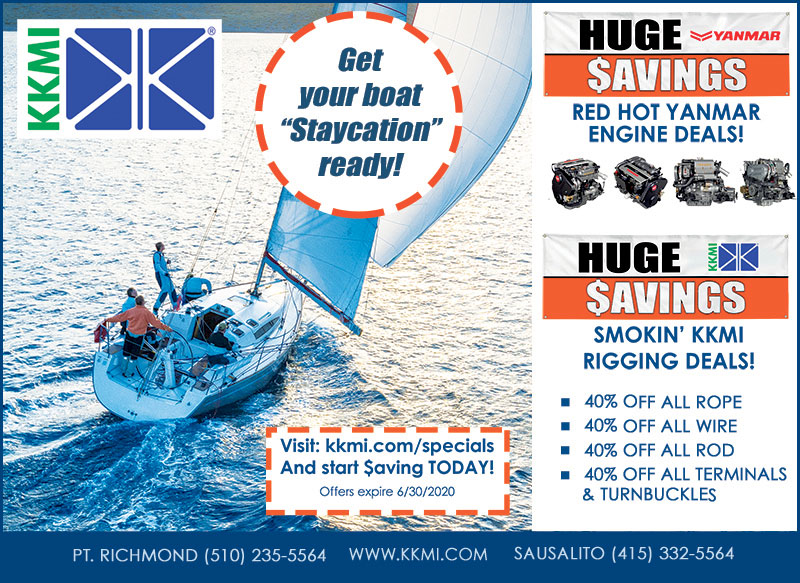
Local Cruising Destinations: Moss Landing Harbor
Local cruising looks hot this summer, with Latitude 38’s Delta Doo Dah already hitting entries of 80 boats. But some folks prefer the cool of Monterey Bay to the Delta heat. If you like wildlife (rowdy sea otters, majestic humpback whales or aggressive sea lions) instead of the other kind of wild life (parties, water toys, raft-ups or a poker run), then consider a cruise to Moss Landing, in the heart of Monterey Bay.
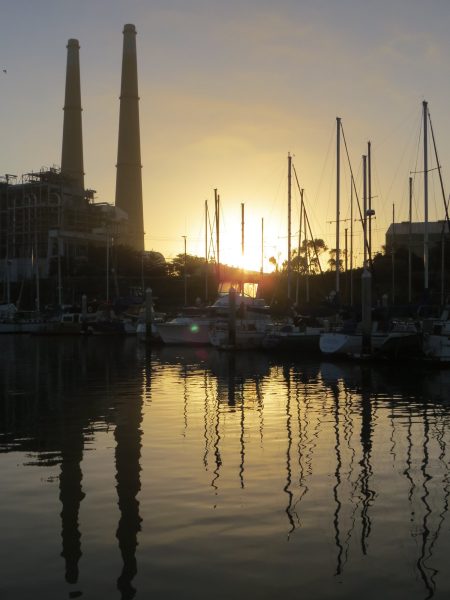
An Easy Run from San Francisco Bay
Sailing outside the Golden Gate involves open-ocean risks on a stretch of coastline prone to frequent gales, fog and lots of traffic by large commercial vessels. You need a well-prepared boat and the experience to handle the expected conditions. With those caveats, and depending on weather, the cruise to Moss Landing is an easy day’s run.
We’ve made the trip from Richmond a number of times in 8 to 10 hours. We look for an early ebb to launch our old Cal 40 under the Golden Gate Bridge, watching our AIS for approaching ships. Typical summer prevailing conditions, if you depart San Francisco Bay early, feature light morning breezes, with the well-known ‘Montara Hole’ as you pass Pacifica. By the time we put Pillar Point Harbor and Half Moon Bay astern, the wind machine has fired up, and we hoist sail and shut down the diesel. Passing Año Nuevo Lighthouse and Waddell Beach, we encounter kiteboarders, windsurfers and 18-23 knots of the usual Monterey Bay pressure. Santa Cruz Harbor is a convenient detour or refuge, about two hours from our Moss Landing Harbor destination.
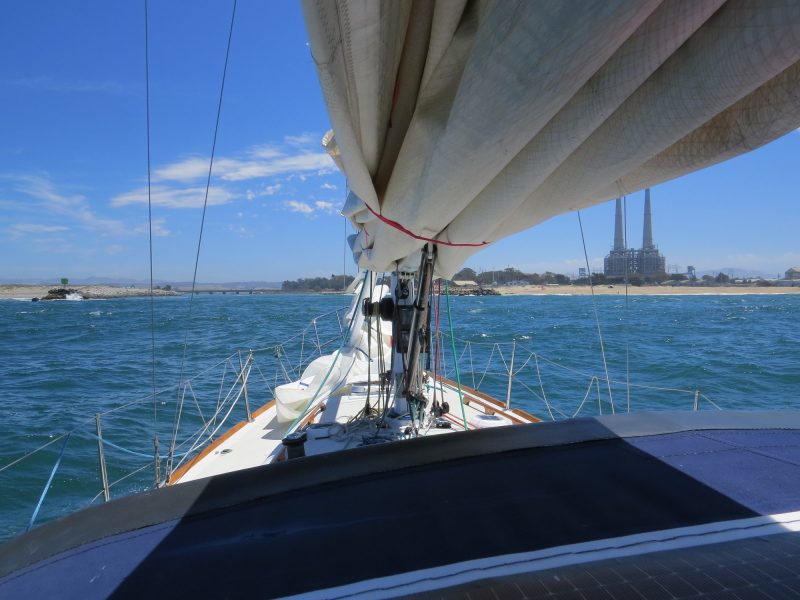
Giant Underwater Canyon
Moss Landing occupies the intersection between Elkhorn Slough, one of the largest wetlands in California, and the huge submarine Monterey Canyon. Imagine the Grand Canyon drowned in the Pacific, a monster chasm dropping precipitously to 10,000 feet deep and more. This vast expanse is what drives the vibrant ecosystem of the Monterey Bay National Marine Sanctuary. A boater entering Moss Landing is greeted by a cacophony of sound from an incredible profusion of birds, sea lions and sea otters. The overpowering smell of guano from vast flocks of gulls and pelicans greets you at the channel’s end as you turn right for Moss Landing Harbor, or steer left into the narrow line of buoys leading to the Elkhorn Yacht Club.
In pre-pandemic times, Moss Landing supported several commercial whale-watching tour boats, two or three kayak rental businesses, an aquatic pontoon water bike rental, and Whisper Charters, a sedate electric excursion boat. All of these outfits let you see breaching humpbacks, pods of orcas, even a few blue whales that occasionally visit Monterey Bay.
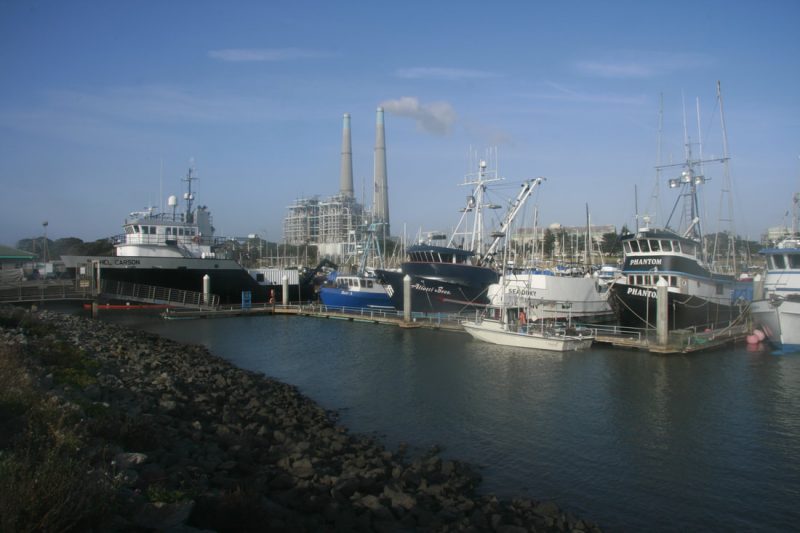
A Funky and Unique Marina
Moss Landing Harbor is home to more than 600 boats, including 350 fishing boats, 200 pleasure craft and 30 research vessels. Be warned that the facilities are a bit grungy and minimal. You can expect creaky wood docks, which may be occupied by large, bellowing sea lions. The restrooms and showers are best left to the imagination. This is definitely not the St. Francis Yacht Club.
When you scrape off the rough edges, however, the locals are friendly and the adventures await. You’ll find local cruisers like our friends Vince and Maryann, who bought a Freedom 40/40 sailboat, spent a year preparing their new steed in Moss Landing, then headed south for Baja California. There’s a liveaboard community too, populated by an oddball collection of folks like our friend Benny, the Vietnamese fisherman.
Excellent eating establishments are within walking distance. We love the Whole Enchilada for California-style Mexican food, or the Thai food at Lemon Grass. The Moss Landing Cafe is our breakfast favorite, and everyone has heard about Phil’s Fish Market.
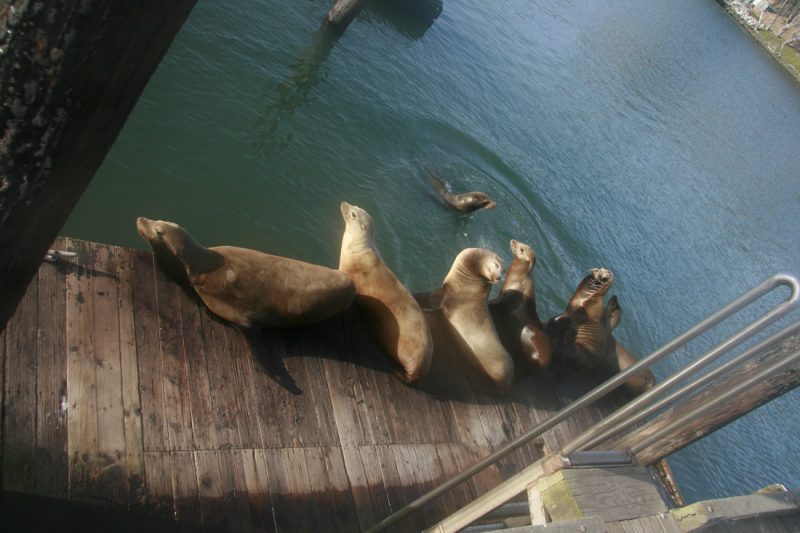
No Moss Landing cruise is complete without a foray into Elkhorn Slough. We have explored it both by kayak and by El Toro dinghy (which requires pulling out your mast to float under the highway bridge). You can ride the crest of a flood tide all the way to Kirby Park, about four miles away at the far end of the Slough. You can also visit interesting hiking trails and a museum at the Elkhorn Slough Reserve, which requires access to a car.
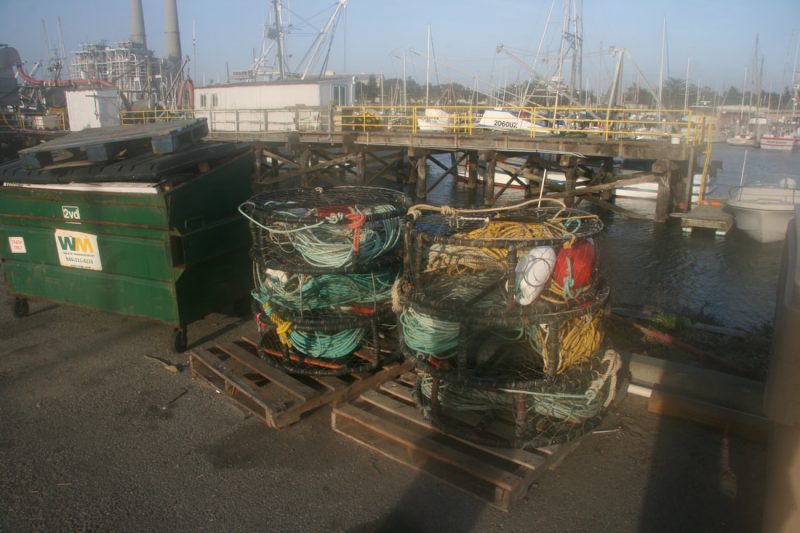
We would highly recommend adding Moss Landing to your Monterey Bay summer cruising plans. Since it’s about equidistant from both Monterey and Santa Cruz harbors, we could easily fill a two-week family vacation visiting all three harbors. We’ll shine our Latitude spotlight on those destinations in a future story.
June Issue of Latitude 38 Out Today and Completely Normal
We’ve been wondering where the bottom of the well of bad news lies. There have been glimmers of something resembling normal on the horizon, but given the devastating fire in the heart of San Francisco’s working waterfront on May 23, normality is doing a two-steps-forward, three-steps-back shuffle.
But don’t worry, we have a healthy dose of escapism in this month’s Latitude 38. Here is a taste of the normal-ness we’re bringing you in the June issue:
A Creative Escape to the Delta, with Martin Machado
“My original plan was to try to make it to Sacramento completely under sail if possible, and to create as many small paintings as I could en route,” said Martin Machado, a San Francisco-based wearer of many maritime hats. “I had secured a show at a gallery called Public Land in Sacramento, and had pitched them this idea, which they were excited about.” Machado set sail for the Delta singlehanded in mid-March, not long before California went into lockdown. “Sacramento had not been officially shut down, so I decided to keep going. The gallery and I realized that we could not have a public opening, but I was technically self-quarantining, so I decided to keep painting; I wanted to follow through on my agreement to deliver the work.”
What followed was what most cruisers might expect: inclement weather, a recalcitrant motor and moments of singlehanded bliss while anchoring in the many nooks and crannies of the Sacramento River. Nobody does a sailing trip quite like Martin Machado.
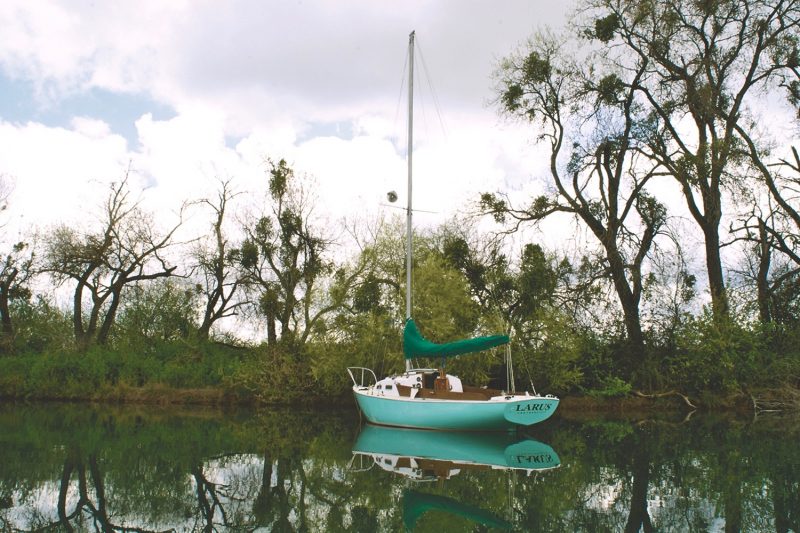
Puerto Vallarta Over the Transom
“During the many behavior changes required by the COVID situation, I found myself spending a lot more time on the couch. The 2019 Baja Ha-Ha was over and in the books, but apparently there was still one boat that needed to bash her way home,” wrote Latitude correspondent Captain Midnight. “If you have a USCG license, it is apparently still OK to move boats that, for a variety of reasons, need to have water pass under their keels. Without getting into all the technicalities — which I don’t understand — I can tell you this much: Captain Midnight and two sailing pals were hired to fly to Puerto Vallarta and deliver a yacht to San Francisco.”
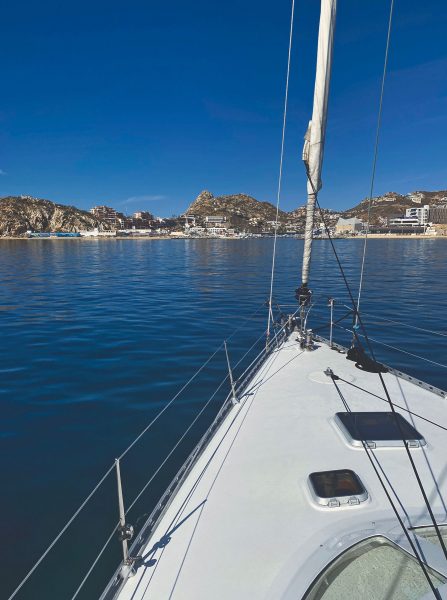
Enduring Cruiser Limbo, and the Freeze on Tropical Cruising
“A few days before our April edition went to press, widespread ramifications of the COVID-19 pandemic forced scores of South Pacific-bound sailors to slam on their brakes and abruptly postpone their long-anticipated travels to French Polynesia and beyond,” wrote Latitude editor at large Andy Turpin. “Foreign-flagged yachts that were already en route to French Polynesia, or were about to set sail — including Pacific Puddle Jump rally participants — were asked to cancel their crossings or delay their arrivals in the islands. Virtually all island nations lying downstream of Tahiti — that is, west and south — closed their frontiers completely to cruisers in mid-March: no boats in, no boats out. But policymakers in Tahiti, much to their credit, left the ‘door’ open just a crack, acknowledging that vessels that had just crossed a minimum of 3,000 miles of open ocean nonstop would need to fuel up, re-provision, and make repairs, even if they weren’t allowed to freely cruise the territory’s five archipelagos as in years past.”
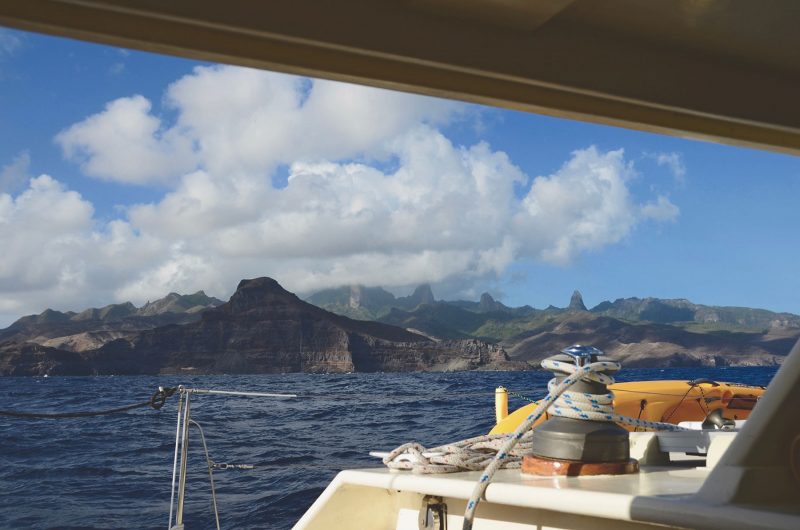
Victory and Defeat in Leg 5 of the Clipper Race
“At the start of January, I headed off on an adventure, sailing as crew and assistant watch leader in the 2019-2020 Clipper Round the World Yacht Race, an ocean yacht race for amateur sailors,” wrote Mike Holmes. “I participated in Leg 5, with the originally scheduled route from Australia to China.” As you might imagine, Holmes’s plans — and those of the entire Clipper Round the World Race — were put on hold by the pandemic. And yet, “During Leg 5, 17 other crew and I spent 37 days at sea, sailed 6,000 miles in two separate races, crossed the equator, spent hours becalmed in the doldrums, and experienced the high of a race win and the low of a race loss,” Holmes continued. “What an experience it has been!”
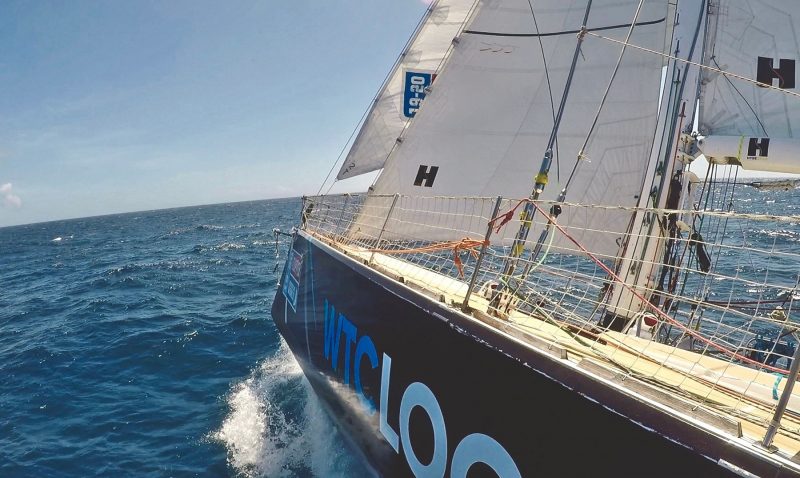
Lockdown Racing, with Max Ebb
“Whenever two sailboats are in sight of each other and sailing in the same direction, they are, by definition, racing,” Max writes this month. “I’ve had a number of these encounters recently during my socially distant singlehanded sails out on the Bay. But it’s not the same. I miss real racing. I have friends who are in withdrawal because they can’t hang out at their favorite coffee bar. I have other friends who would kill to go to a ball game. I even know people who miss the monthly dinner meetings at the yacht club, believe it or not. And we all need haircuts. But me, I’m jonesing for a crowded mark rounding and a hard-fought tacking duel on the final beat.”
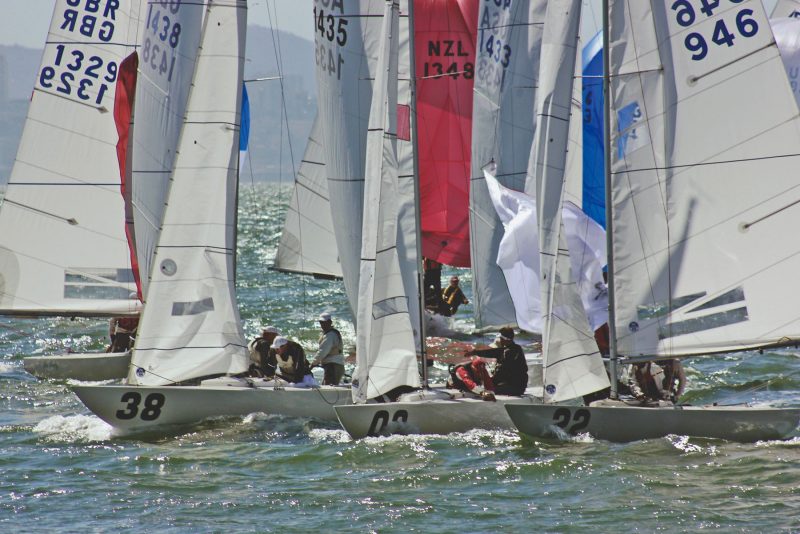
Plus Changes in Latitudes, Racing Sheet, Sightings, Lips, Letters and more.
To be fair and upfront, nearly every aspect of our sailing lives has been affected — and thus reflected in our pages — by the pandemic. In Changes and World of Charter, cruisers around the world adjust to the rapidly changing landscape. In Racing Sheet . . . spoiler alert, there’s not a lot of racing going on, but we do have a report on the eviction of Island Yacht Club in Alameda. (We’ll have more about that situation in an upcoming ‘Lectronic Latitude.) In Sightings, we take a look at Stan and Sally Honey’s quarantine routine, bring you details about the upcoming Summer Sailstice #phototreasurehunt, check in on Harvey Jones’ new boat Outlier, and have a visit with Jim Quanci, who is repurposing his Cal 40 Green Buffalo from Pacific racer to Delta cruiser.
And in this month’s Letters, we continue to ask the question: “To sail or not to sail?”
Where would you find this month’s magazine? If you’re looking to step outside for some fresh air you can find one here. A couple of our local distributors in Sausalito sent in photos and are among the many who now have them on hand:
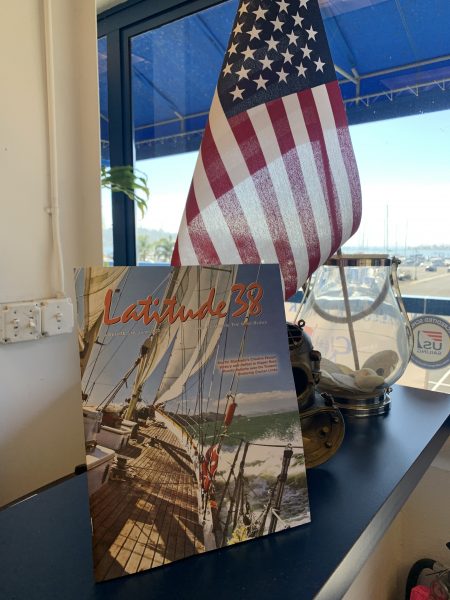
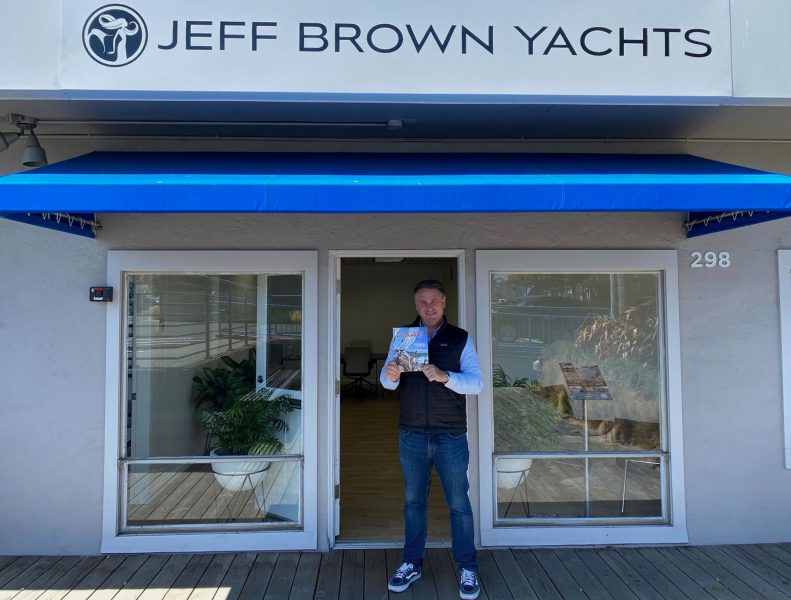
We look forward to seeing you on the waterfront.
Huge Savings at KKMI
Cyclone Harold Relief Efforts in Fiji
In the aftermath of April’s Cyclone Harold, many South Pacific sailors have banded together to help those who were most impacted by the storm. While the severe tropical cyclone impacted four nations — the Solomon Islands, Vanuatu, Fiji and Tonga — it was the island of Espiritu Santo in Vanuatu that was the hardest hit. Just weeks after the world began to come to grips with the coronavirus pandemic, Espiritu Santo was devastated by a direct hit from a Category 5 cyclone. The pandemic made relief efforts that much more challenging.
Tens of thousands of people are said to still be lacking clean drinking water, proper shelter and other basic essential needs. “We are seeing increases in diseases such as dysentery, which has resulted in a handful of infant deaths,” explains Nigel Skeggs, president of Sea Mercy’s operation in Fiji. Since the devastation caused by Harold, Sea Mercy has been working to help provide clean drinking water to the people of Vanuatu. “With this final shipment, we have now been able to provide around 1,650 buckets with Sawyer filters, a watermaker, 200 village filters, tents and other supplies,” Skeggs explains. “Yachts and superyachts donated the buckets, and we have raised about $180,000 US for relief efforts since Harold. Normally the yachting community engages directly with the local communities, but with COVID, we’ve had to rely on other avenues for logistical support.”
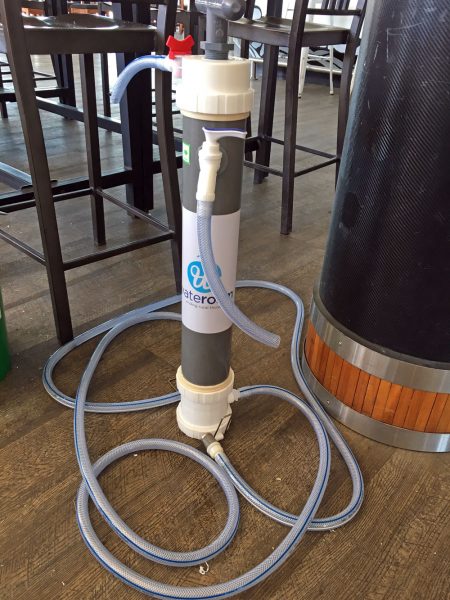
With a very small staff and virtually no administrative costs, Sea Mercy relies on volunteers to help them accomplish their mission. A nonprofit organization founded by sailors and sourcing much of its funding from the yachting community, it’s only natural that the organization would also reach out to yachties when they need volunteers. Last Wednesday at Fiji’s bustling Port Denarau, more than two dozen cruising sailors volunteered to help assemble some 950 buckets equipped with Sawyer filters, which can filter 99.9% of impurities out of the water.
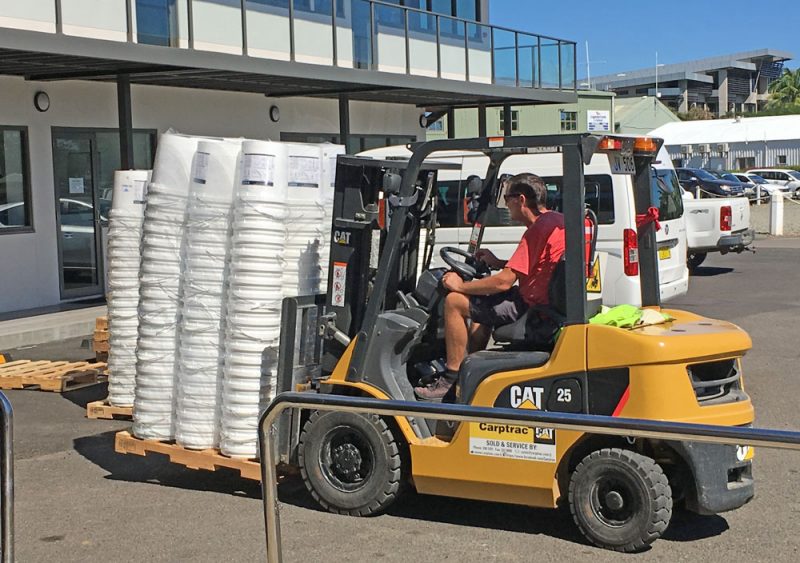
Each bucket was drilled with a hole that was cleaned up before a fitting was installed to allow the filtration system to be attached. The buckets then had an adhesive label applied that included instructions in the local language of Bislama. “There’s just three of us with Sea Mercy in Fiji, so it’s really great to get so much help from the yachties,” says Nigel. Each bucket will provide water for about 10 people. With the 1,650 buckets, the 200 village filters and the big watermaker, Nigel estimates that they have helped close to 60,000 people in Vanuatu gain access to clean drinking water.
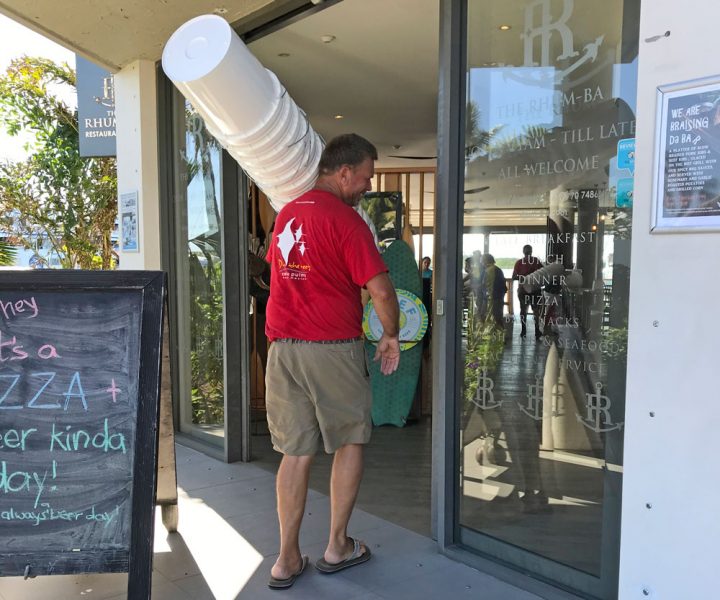
As well as helping the people of Vanuatu, Sea Mercy has also made significant efforts domestically in Fiji. The Northern Lau Food Initiative raised over $4,500 US to send food and supplies to Vanua Balavu island in Fiji’s Northern Lau group of islands. Incredibly, about half of that amount came from a birthday fundraising effort spearheaded by San Francisco’s Jose Miguel Castello of the Beneteau 423 Carthago, who got 32 people to donate $32 for his 32nd birthday. He matched that amount and donated about a grand to help out this effort. Good job, Jose!
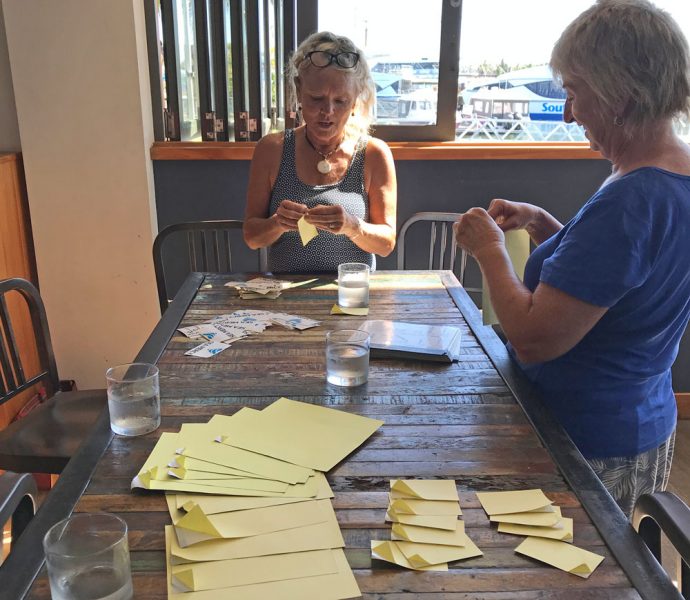
Thanks to all of the cruising sailors, and to the great folks at Sea Mercy for helping out with Cyclone Harold relief efforts during this incredibly challenging time. While this article highlights some of the great progress that organizations such as Sea Mercy have made, there is so much more work that needs to be done. We hope that you will consider hitting up Sea Mercy’s Paypal link with a donation; any amount helps. Sea Mercy is a 501(c)(3) nonprofit based in the USA.
Vinaka vaka levu from Fiji.
‘Yankee’ Faced Rebuild Regulations in 1946
The more things change the more they stay the same. Somehow we started rereading Yankee’s Wander World by Irving and Electa (Exy) Johnson. Published in 1949, it’s a classic, true story of sailing around the world by pioneering voyagers supported by the paying guests who joined their adventurous cruising life.
For this post-war voyage Irving and Exy Johnson wanted to find a North Sea pilot schooner. And it was Sterling Hayden who helped them find the Duhnen, the last schooner the Germans built before the war. After purchasing her, they took her to a boatyard in Brixham, England, to convert her to a brigantine. What caught our eye and reminded us of how things never change was this line: “In Brixham there was none of the regulations that we would have found in a big, modern shipyard.”
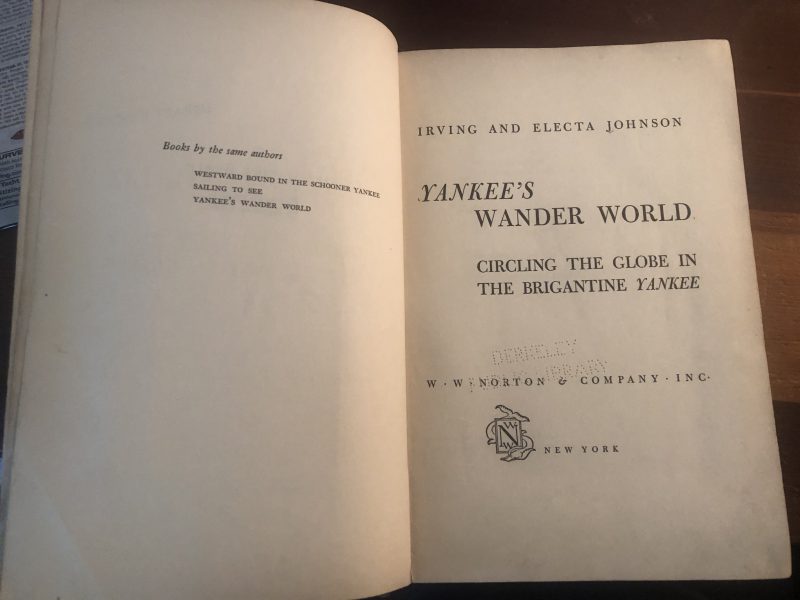
It’s funny how people 70 years ago felt a similar sense of oppressive oversight. It was surely far less restrictive than today.

